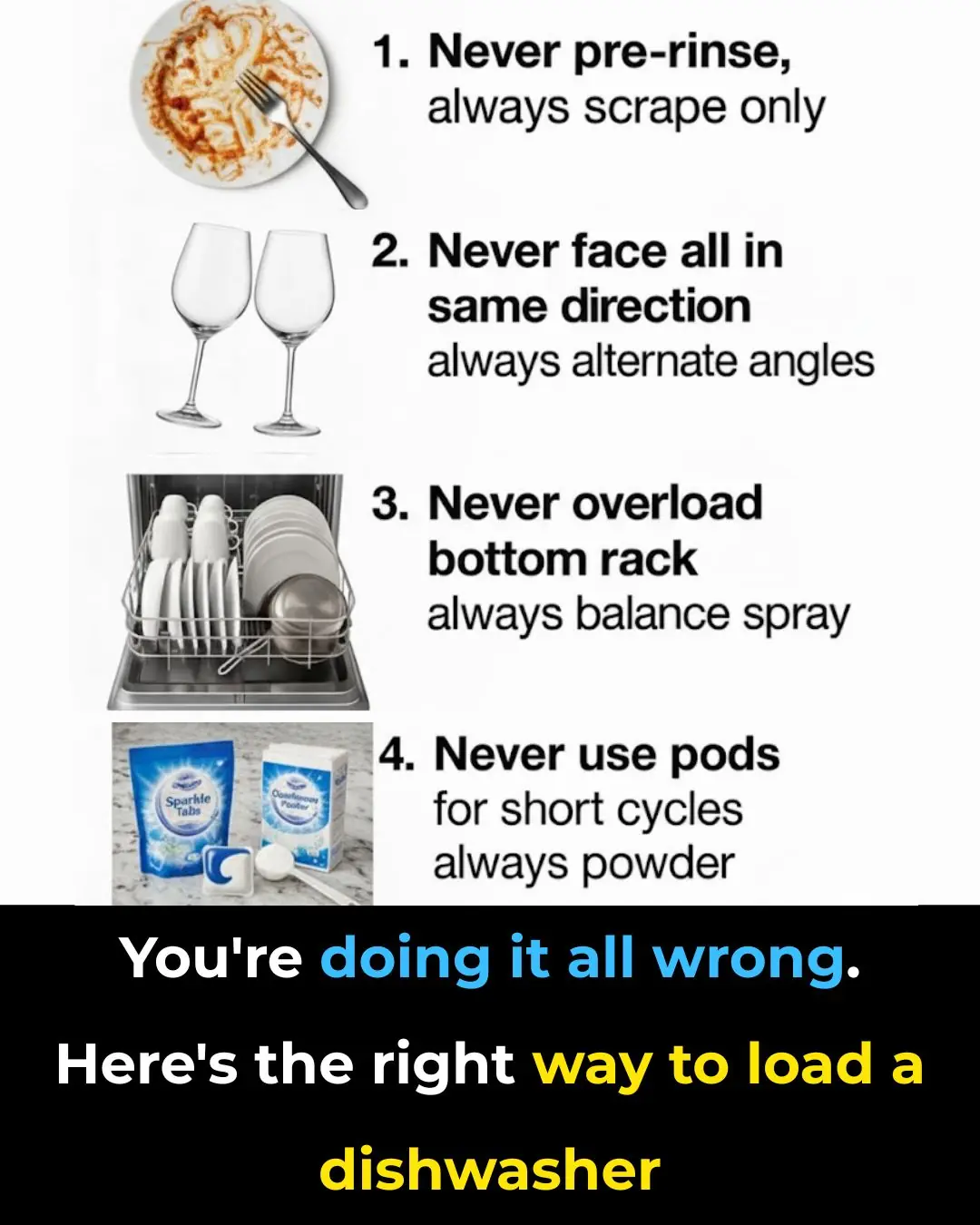
Stop organizing these 10 things backwards
In the quest for a more efficient and stress-free lifestyle, organization plays a pivotal role. The way we arrange our surroundings—whether it’s our kitchen shelves, wardrobe, or digital folders—has a direct influence on how smoothly our days unfold. Yet, even with the best of intentions, many of us unknowingly organize our spaces in ways that work against us rather than for us.
True organization isn’t just about neatness; it’s about functionality and flow. By rethinking how we store and categorize everyday items, we can improve accessibility, reduce frustration, and create a living space that genuinely supports our routines. Below are eleven common organization mistakes—plus practical strategies to reverse them—so you can make your home and digital life both orderly and efficient.
1. Spices: Don’t Store Them Above the Stove
Keeping spices above the stove may seem logical for convenience while cooking, but this spot is actually one of the worst places for them. The heat and humidity generated during cooking can cause spices to lose their potency, aroma, and color much faster.
Try this instead: Store your spices in a cool, dry location—perhaps a dedicated spice drawer, a pull-out rack, or a labeled shelf away from direct sunlight and heat. Airtight glass jars or tins will help preserve freshness, and labeling each one clearly will make cooking more intuitive. You’ll not only retain flavor but also make your cooking process smoother.
2. Towels: Fold, Don’t Roll, in Compact Spaces
Rolled towels may give your shelves that “spa aesthetic,” but in small spaces, folding is usually the smarter move. Flat, folded towels take advantage of vertical space and prevent the awkward gaps that rolled towels often create.
For tighter storage areas like bathroom cabinets or linen closets, fold towels neatly into thirds or quarters, then stack them vertically. This method makes it easy to grab one without disturbing the rest and allows you to store more in the same amount of space. For extra flair, alternate colors or sizes in each stack for a more organized look.
3. Cleaning Supplies: Store Outside the Bathroom
It’s tempting to keep cleaning products under the bathroom sink for convenience. However, bathrooms are typically humid environments, which can cause products to degrade faster or even create unwanted chemical reactions.
Designate a dedicated cupboard or utility closet elsewhere in the home for cleaning items. Use clear bins or caddies to sort them by purpose—glass cleaners, surface sprays, disinfectants, etc. This not only prolongs shelf life but also keeps harmful substances out of reach of children and pets. A portable cleaning caddy can make the task even easier when it’s time to tidy up.
4. Pantry Items: Rotate So the Oldest Are in Front
A common pantry pitfall is placing new groceries in front of older ones. Over time, this leads to forgotten cans and expired snacks at the back of the shelf.
Adopt the FIFO (First In, First Out) method: always bring older items to the front when restocking. Group similar foods together—soups with soups, grains with grains—and consider labeling shelves by category. This small habit keeps your pantry organized, reduces waste, and ensures every ingredient gets used while it’s still good.
5. Books: Arrange by Size, Not Color
While color-coded bookshelves might look beautiful on Instagram, they’re rarely practical for real readers. It’s far easier to locate specific titles when books are organized by size or genre.
Group books of similar height together to create a clean, cohesive look and to maximize vertical shelf space. You can still inject personality—perhaps dedicating a small section for colorful covers or favorite authors—but function should come first. This layout also allows more books to fit comfortably on each shelf.
6. Cables: Use Ties and Labels Instead of Bundling
Few things are as frustrating as untangling a knot of cables. Simply wrapping them into a bundle can make things worse. Instead, invest in Velcro straps or reusable cable ties.
Bundle each cable individually, label both ends, and secure them neatly. This makes it easy to identify what’s what—whether it’s your phone charger, HDMI cord, or laptop adapter. For extra order, use small storage boxes or drawers to separate types of cables, and say goodbye to tangled chaos once and for all.
7. Shoes: Organize by Frequency of Use
Sorting shoes by color or style might look pretty, but it’s not always practical—especially when you’re in a rush. The key is accessibility.
Keep the shoes you wear most often near the front of your closet or on a rack near the door. Seasonal or special-occasion pairs can be stored higher up or in boxes elsewhere. You’ll save time each morning and maintain an uncluttered entryway. For an added touch, label storage boxes or use clear bins so you can see what’s inside without opening each one.
8. Wardrobe: Sort by Season, Not Color
A rainbow-colored wardrobe can look visually stunning, but it’s not necessarily functional. Organizing your closet by season makes dressing much simpler.
Group clothes according to weather—warm-weather items like t-shirts and shorts in one section, and cold-weather layers like coats and sweaters in another. Keep the current season’s clothing front and center, and rotate items as the seasons change. This method saves time during busy mornings and helps you rediscover forgotten favorites when you swap your wardrobe each season.
9. Digital Files: Use Descriptive Names, Not Just Dates
Naming files solely by date can quickly become confusing, especially as your folders fill up. Instead, use descriptive and consistent file names that clearly convey the content or project.
For example, instead of “Report_2025_03.pdf,” try “Q1_Sales_Report_Final.pdf.” Adding project names, version numbers, or keywords can make files searchable at a glance. Combine this habit with organized folder structures—for instance, separating work, personal, and financial files—and you’ll save hours of digital clutter cleanup later.
10. Photos: Arrange Chronologically for Better Storytelling
Photos capture your life’s timeline, so they’re best enjoyed in chronological order. Randomly stored photos—whether printed or digital—make it hard to find special memories when you want them.
Sort your photos by year and event. For digital photos, use metadata and date filters to automate the process. For printed photos, label albums or storage boxes by year or occasion. A well-organized photo library allows you to revisit memories effortlessly and share them meaningfully with friends and family.
11. Fridge: Make Expiry Dates Easy to See
When you can’t see expiry dates, food tends to go bad unnoticed. To prevent waste and spoilage, arrange your fridge so that items nearing expiration are clearly visible and within reach.
Place perishable items—like dairy, leftovers, and produce—toward the front. Use transparent bins to separate food groups, and consider labeling each section (“snacks,” “meats,” “dairy,” etc.). Regularly take a few minutes to review what’s close to expiring. Not only does this reduce waste, but it also ensures your meals are made with the freshest ingredients possible.
Final Thoughts
True organization isn’t about rigid systems or picture-perfect aesthetics—it’s about making your space work for you. By questioning traditional habits and reorganizing with purpose, you can create an environment that feels calmer, functions better, and supports your daily goals. Whether you’re decluttering your digital world or simply rearranging your kitchen shelves, remember: efficiency grows from intention, not just order.
News in the same category


Don’t Buy Tomatoes Anymore – Grow Them at Home, Plants Grow “Fast as Lightning” with Bountiful Fruits

My nana taught me this hack to get rid of dark circles in 5 mins with 0 work. Here’s how it works

How to Keep Ripe Bananas Fresh Without Turning Them Brown

My nana taught me this hack to remove blackheads in 2 mins with 0 work. Here’s how it works

7 Affordable Fruits That Are Surprisingly Good for Fatty Liver – Everyone Should Know

If you drink lemon water every morning, this is what happens to your body

Stop wasting money on these 10 things

Simple way to repel cockroaches

Washing Machine Full of Dirt and Bacteria? Pour One Bowl of This Inside — It’ll Be Spotless and Fresh Like New!

Stop cooking these 10 things in the microwave

The Silica Gel Pack You Always Throw Away Has 6 “Magical” Uses: Great for Your Health and Elevates Everyday Life

Put ice cubes in to cook rice: The seeds are delicious and chewy

Knowledge of how a water filter can become a disease site

When boiling pork intestines, don't put them in cold water: Doing it this way will make the intestines white and crispy, but not tough.

Bone stew, simmered bones for this dish, the meat is tender and the broth is sweet and clear.

Last weekend, I made grilled ribs like this to treat my guests. Everyone exclaimed because it was so delicious.

When you buy pork, don't wash it in water right away. If you do this, the meat will stay fresh and delicious for a whole month.

Don't put ripe bananas in the refrigerator right away: Do it this way, and they will stay fresh for a whole month, without turning black or spoiling.
News Post

You’re doing it all wrong. Here’s the right way to load a dishwasher

Don’t Buy Tomatoes Anymore – Grow Them at Home, Plants Grow “Fast as Lightning” with Bountiful Fruits

My nana taught me this hack to get rid of dark circles in 5 mins with 0 work. Here’s how it works

How to Keep Ripe Bananas Fresh Without Turning Them Brown

YOUR FEET ARE A 'BLOOD SUGAR METER' BEWARE OF DIABETES IF YOU FREQUENTLY EXPERIENCE THESE 12 SYMPTOMS

My nana taught me this hack to remove blackheads in 2 mins with 0 work. Here’s how it works

7 Affordable Fruits That Are Surprisingly Good for Fatty Liver – Everyone Should Know

10 Weird Winter Pest Control Tricks That Actually Work

Put Two Glasses on the Door Handle — A Small Action That Brings Big Safety Benefits

Rats Running on the Ceiling? Try These Simple Tricks to Get Rid of Them for Good

How Long Can You Keep Frozen Meat? Here’s the Answer

Drink Coffee at These Four “Golden” Times of Day for Maximum Benefit: Your Liver, Digestion and Whole-Body Health Get a Boost

If you drink lemon water every morning, this is what happens to your body

Stop wasting money on these 10 things

Simple way to repel cockroaches

Washing Machine Full of Dirt and Bacteria? Pour One Bowl of This Inside — It’ll Be Spotless and Fresh Like New!

Stop cooking these 10 things in the microwave

The Silica Gel Pack You Always Throw Away Has 6 “Magical” Uses: Great for Your Health and Elevates Everyday Life
